
Venus, Distant Weather Balloon, Monsoon Storm
Posted: 3 September 2013
Monsoon clouds returned on Sunday, 1 September 2013, so no observing. The observatory was opened Monday, 2 September, at 1829 MST, 99°F. The sky was mostly clear but there were a few monsoon clouds around. At 1839 MST, viewed Venus, 83X and 222X. The gibbous phase was clearly visible. I switched to a 1.25" 9mm (222X) eyepiece and attached the iPhone 4 to the 8" LX200-ACF using the MX-1 afocal adapter. I did short video recordings of Venus without any filters, with a moon filter, and with an orange filter (#21) + moon filter. This cropped image is from the no filter video:
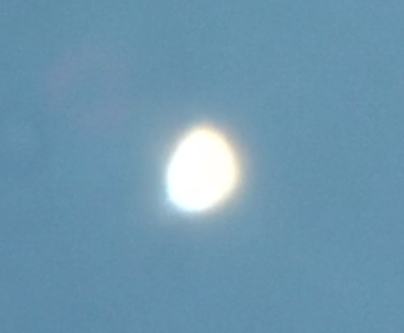
At 1854 MST, I resumed Venus observing at 222X using the orange filter + moon filter. Using both filters in combination helped reduce the glare from the bright planet and the distortion from our atmosphere. I then switched from the 1.25" 9mm (with filters) to the 2" 9mm 100° eyepiece (222X, no filters) and viewed Saturn. The view was not great due to Saturn's low altitude but some cloud bands and Cassini Division were visible.
At 1904 MST (about 20 minutes after sunset), I saw a very bright object in the northwestern sky. It was brighter than Venus and didn't seem to be moving (so was probably not an airplane).
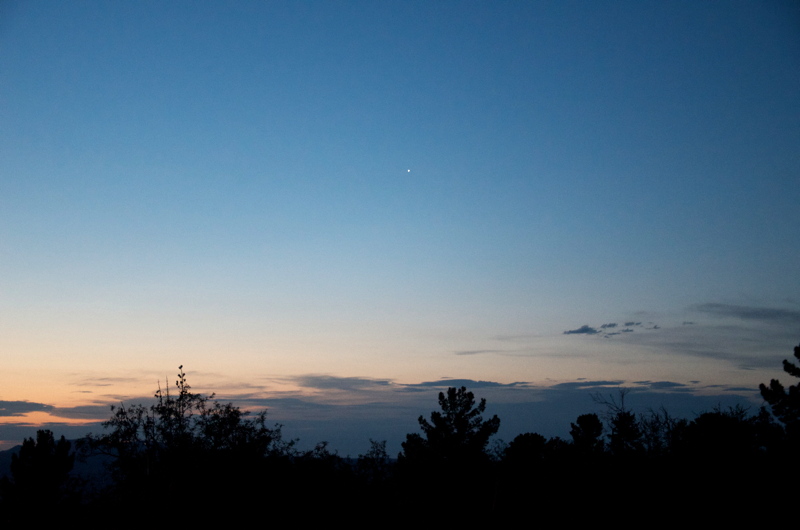
Using 7x50 binoculars I was able to identify the object as a weather balloon. I returned to the house to exchange the 18-105mm lens on my D7000 DSLR with a 70-300mm lens. I took these two (cropped) photos of the weather balloon about a minute apart (1910-1911 MST), showing the changing light as the sun set as seen from the balloon's high altitude:
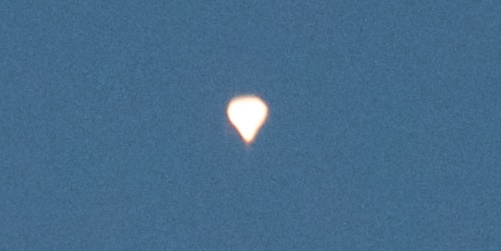
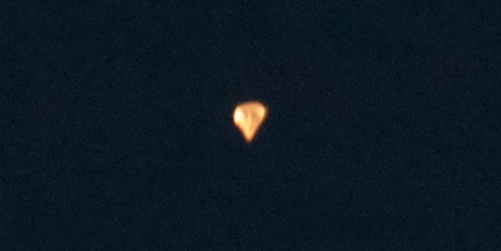
Initial reports on Twitter said that the balloon was visible over Phoenix, Arizona. Later reports said that it was a NASA weather balloon launched from New Mexico. Phoenix is about 100 miles northwest of Oracle, so I was seeing the balloon from a long ways away.
By 1912 MST, the balloon was fading out fast.
At 1915 MST, I took a final look at Saturn, 83X. Clouds were now in much of the eastern half of the sky and there was a large monsoon thunderstorm to the southeast. I was seeing frequent lightning from the storm. I began monitoring the storm:
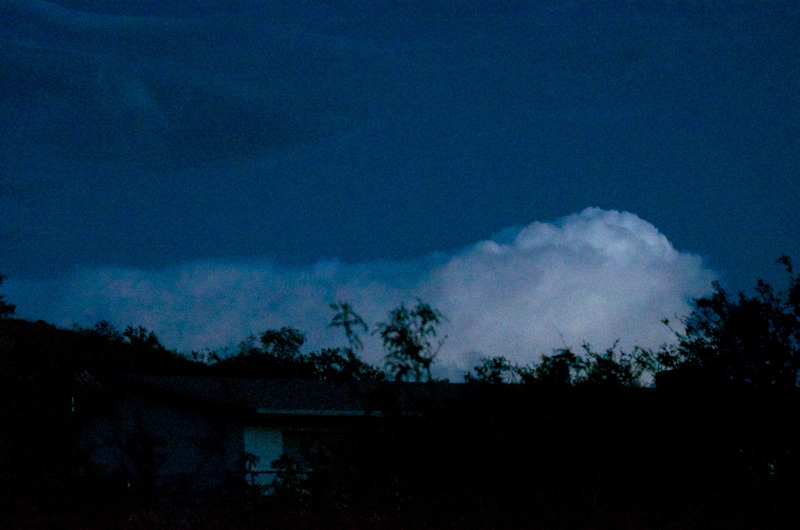
The clouds in the eastern sky seemed to be coming from the storm. I had planned to do some DSO imaging to the east after astronomical twilight ended, so these clouds would prevent that. I decided to close up for the night.
The observatory was closed at 1945 MST, 83°F.
Comments are welcome; use the Comments section below, or you can Email Me. Thanks.
Cassiopeia Observatory Home Page